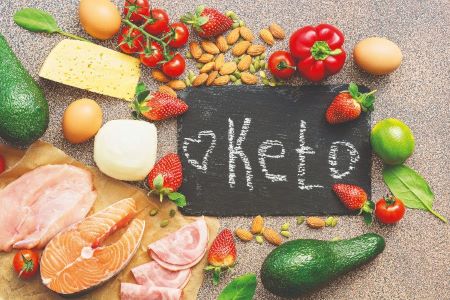My First Taste of Paleo
Years ago, and before I came into the CrossFit scene, I was approached by a man in a Globo Gym with questions about a Paleo diet. Not knowing the ins and outs of the paleo diet enough to give advice, I simply replied, “I think it is similar to the Mediterranean diet, right?”
The gentleman looked confused and said, “I’m not sure.”
“It doesn’t matter,” I replied, “Tell me about your diet.”
“It’s simple, I just avoid grains and dairy.”
I assumed there had to be more to the Paleo diet than only cutting out grains and dairy, but it struck me as odd; the man standing before me was in great shape, had lived a healthy life, and was already on a pretty regimented program before going to a Paleo diet.
I had a pretty good idea of his current diet, which already excluded dairy. So, the only other foods that would be affected by the Paleo diet would be oats and rice.
So I asked, “Were you having an issue with your oats or rice?”
“No,” he replied, “I just wanted a change and I feel great on the Paleo diet.”
“Did you not feel great before starting paleo?”
“I did, I just got bored and wanted a change.”
“Fair enough,” I replied, “So was it difficult making the change?”
“No, not really, I had a stomach ache for the first few days, but I think I just needed to get my body familiar to it.”
Related: The Keto Diet: A Complete Guide For Beginners
What Is The Paleo Diet?
The Paleo diet takes inspiration from how our hunter-gatherer ancestors are believed to have eaten thousands of years ago. This means you’d be focusing on foods you could hunt, fish, or gather, like lean meats, seafood, fruits, vegetables, and nuts and seeds.
The idea is to steer clear of anything that’s been processed or could be considered ‘modern’ food. That includes grains, legumes, dairy, and anything with added sugar or artificial ingredients.
People who follow the Paleo diet often report feeling more energetic and say it helps with weight loss. It’s become particularly popular among folks who are keen on the idea of ‘eating clean.’
They appreciate that it prioritizes whole, natural foods and eliminates things that often cause digestive issues or inflammation, like processed foods or certain grains. So, if you’re looking to go back to dietary basics, the Paleo approach might be worth a try.
Probing My Interest
Toward the end of March earlier this year, I joined an old friend for lunch. We sat down in front of a menu with a paper insert. I opened the menu and the paper insert revealed a “Lent Menu.” The menu listed a few appetizers, lunches and dinners that consisted mostly of fish and shrimp.
The waitress came over and took my order first, and then my friends. She ordered some sort of naked bacon cheeseburger that was presented with a lettuce bun. After the waitress had taken our orders and left, I asked my friend whom I haven’t seen in quite a while, “I thought you weren’t allowed to eat meat on Fridays?”
She responded without hesitation, “Well that is because fish was considered a poor man’s food, the followers of Jesus could not afford meat… that is why they ate fish, because they could catch it themselves. They would have eaten meat if they could. Man later continued this through Lent as a sacrifice.”
I felt that she was very passionate about the subject based on her response, and I had no intentions of making that the topic of conversation over lunch, so I dropped it. It isn’t often I get to spend the afternoon with old friends, I had no desire to spend it with probing with questions about her personal views on religion.
I later went home and dug into the topic a little more, and depending on the article, there are dozens of reasons many religions don’t eat meat on Friday. Her explanation seemed to be in-line with many of the explanations.
This got me thinking about the Paleo diet again, what started it, why do people value the diet, and most importantly do people know why they are doing it?
The Juncture
In the first story, shared above, I mentioned a word that really stuck out to me. Familiar. I can only assume that when the man described his initial physical feeling to the new diet as not being familiar to him, he most likely was referring to the increased dietary fiber that was introduced to his body from the extra fruits and vegetables. And with this same reasoning, it could be said that he needed to adapt to these changes.
Years ago I read a book called “The Blue Zones.” The Blue Zones was a research-based book written by a group of people that sought out areas of the world where people have the longest life expectancies.
This type of research, not particularly the Blue Zone book, has led Americans to follow the countless fad diets and nutritional supplementations that many of us have either tried or are still following. We try these mainly with the thought that if it works for someone else then it should work for us.
Let’s take a look at a few of the superfruits: Acai, Goji, Noni, and Pomegranate. Acai is most predominantly found in the Amazon, Goji in China, Noni in Southeast Asia, and Pomegranate basically everywhere now.
The fruits have all recently been successful in U.S. markets due to their high Oxygen Radical Antioxidant capacity (ORAC) values and what that means to us. ORAC, which simply put gives a number value to a product on how well it can defend your cells from dying off, becoming infected or protecting against oxidizing other cells.
This is a very good thing. The problem of marketing these high ORAC fruits in the U.S. is that they are often given structure-function claims, not by the manufacturing companies because that is illegal, but by the people. You can read blog after blog, and every other form of social media of someone that “has no more wrinkles because of ***** (take your pick)”, or that “Product A cured my arthritis.”
Structure-function claims are regulated by the U.S. Food & Drug Administration (FDA) so that food and supplement companies cannot lie or mislead an individual into believing that a product can cure or prevent something that has not been supported by clinical research.
So that will stop the corporate world from telling you false claims, but it can’t stop you from telling someone else your experience with a product. Does Acai give you glowing skin? Sure, I don’t know, maybe.
So although people are still conducting research on the Blue Zones, as I’m sure they will continue to do well after I am gone, new information will be brought to light as to why people in areas all over the world live longer than Americans or other countries. I don’t find a problem with the research;
I thoroughly enjoy reading the finished product, and the problem exists within the application of the information. The countries that live the longest have three, maybe four traits in common, so let’s adopt those traits. The problem is that these countries have followed consistent traditions, diet, and physical outputs for generations. Their bodies have adapted to the foods, activities, and other norms that have created the opportunity for them to live a longer life.
Your family has a history of heart disease, and you choose to be a vegan from a young age; chances are you may live longer than most people in your family. Your family has a history of diabetes, you choose not to ever eat refined carbs and consume no sugars; chances are you will be able to fight the odds longer.
These along with many other nutritional tidbits are preventive steps to avoid or prolong a predisposition that could inevitably change your quality or quantity of life.
Paleo does not. It is generalized and speaks benefits such as “Live well” and “Live longer.”
Generalizations, like blanket statements, are extremely dangerous because they cannot be applied to all cases or individuals. “Live well” and “Live longer,” as used to describe a Paleo webpage, are definitely not structure-function claims because these statements do not say that “You will live longer if you only eat Paleo,” so well done Paleo site.
But now dive into the blogs, Facebook posts, tweets, and even the Paleo meals that cover my Instagram newsfeed with statements such as “Couldn’t recover without it” or “Best way to start the morning” dig deeper into the blogs and you will find countless articles on how Paleo saved their life or changed it in a way that certainly no other diet could have done. Oatmeal is bad, and Rice is the devil.
The delinquency with these statements is not that it worked for them, I am happy it did and I am happy that they are living a better life than before, but is it really going to affect everyone in the same way and could they not have achieved the same state of recovery and bliss from other foods?
Like the superfruits, the Paleo diet suggests a lot of potential benefits, has a religious-like following, and most of the claims are made through all forms of media. In defense of the superfruits, they have a scale in which to directly compare them to other like products.
The Science
The body is an amazing thing, it adapts well to new variables. As conveyed in the first story, the man changed to the Paleo diet and only had a few days of stomach discomfort, so why did the man have stomach discomfort?
Enzymes
Enzymes are on your side. Your body has the ability to create enzymes to break down certain nutrients. I don’t eat or drink dairy often, and on the rare occasion that I do drink a glass of milk (normally it’s chocolate milk if I do), I get a slight stomach ache. I know that I am not allergic to milk because I drank it growing up and never had an issue. So what changed?
What changed is that my body once created the enzyme Lactase, and now it can’t produce the same amount. Lactase is an enzyme secreted by the small intestine to digest lactose, the sugar found in milk.
The Lactase enzyme is designed for young children to break down milk and after a person stops consuming dairy, the body will naturally stop producing the enzyme. Many people continue to drink milk throughout their lives and therefore their body never stops producing the enzyme to digest the lactose.
So, in turn, I made myself lactose intolerant by avoiding it for years. This does not mean that I am allergic to milk, which is a completely separate issue, I am still capable of producing the enzyme, just not in the quantities needed to make it easy to digest a whole glass of milk. People’s severities and abilities to produce Lactase to an older age may vary.
Wheat, oats, rice, take your pick, also have enzymes specific to the digestion of them. In fact, every complex carbohydrate (polysaccharides), regardless of the source, requires enzymes to break them down.
There are two carbohydrates that do not require enzymes to break them down, simple carbohydrates (monosaccharides) and fiber. Simple carbohydrates, such as sugars, often do not need enzymes because they are readily available for absorption through the intestine.
Fiber is the other carbohydrate that does not need enzymes to break down because it does not enter the bloodstream, soluble fiber thickens up and slides down the digestive tract and insoluble does not change and continues down the tract.
All complex carbohydrates are treated the same way in the body, whether it is an apple or a cup of oats, it requires an enzyme or a group of enzymes to break the nutrients down for it to be absorbed into the bloodstream.
The glycemic index is a number value that tells us how a certain food is going to affect our blood sugar level, we (blanket statement) like our number systems.
Like the ORAC value explained earlier, the glycemic index allows us to quantify foods and put them into perspective with other like foods. Our body doesn’t know what an apple is, what oatmeal is, or what a potato is. It knows how to adapt, digest, and utilize what we give it.
This does not mean you have a free-for-all to eat whatever foods you want. Processed foods are completely different. Unprocessed foods contain enzymes as well that aid in the digestion with the enzymes produced by the body. When processed food enters the body, your body recognizes that it can’t digest the carbs without help and will release extra acids in the stomach to compensate and stir up a whole new mess with PH balance. We won’t get into that, avoid processed foods.
So we know that there is a difference between being lactose intolerant and having a milk allergy. One means that your body simply isn’t able to produce enough enzymes to break down the lactose in milk causing discomfort and the other means that you have a hypersensitivity to milk that can cause common allergy symptoms.
The same can be applied to gluten and wheat. Having an allergy to wheat can be serious and will have serious reactions, having a gluten intolerance causes stomach issues similar to that described from the lactose intolerance. The difference is that enzymes for digesting oats rice and all other complex cabs are not intended to stop as they are with dairy.
Although enzyme production will become less efficient with age, they will not discriminate against unprocessed oats and rice. The same enzymes that break down other carbs also break down wheat, oats, rice, and gluten. Gluten intolerances are often linked with a disease and have nothing to do with enzymes produced by your body, but rather the enzymes found in the gluten reacting with the body.
Gluten intolerance and allergy tests are normally performed by taking gluten out of your diet for a period of time and then reintroducing gluten into a person’s diet. To most Paleo dieters, this is called a cheat day. So after your cheat day, if you don’t have any feelings of discomfort, I think it is safe to say that you do not suffer from a gluten or wheat allergy or intolerance.
So if you’re not allergic or have an intolerance to wheat and gluten, is there any other benefits to keeping it out of your diet?
Is there more nutritional value to eating a banana than to eating oatmeal? No, the oatmeal has a lower Glycemic Index and contains more vitamins and minerals than the banana.
Of course, this is only one example of hundreds of foods that you are allowed to eat on a Paleo diet vs. any other diet. But it doesn’t change the fact that you are allowed to consume foods on the paleo diet that are not as beneficial as foods that are specifically stated as foods to avoid.
Choosing healthy options for meals does not mean that it has to be Paleo. If following Paleo helps you stay strict to a healthy eating plan or it is just easier to follow because it provides a list of foods you can eat, then more power to you. But it is not at the fault of rice, wheat, oats, or anything else containing gluten.
I will leave you with this…
“Paleo eating plus smart exercise and lifestyle adjustments will help you lose fat and get healthy”
- Robb Wolf
Or
“Smart exercise and lifestyle adjustments will help you lose fat and get healthy”
- Me
Or my favorite
“Healthy eating plus smart exercise and lifestyle adjustments will help you lose fat and get healthy”
– Me
(See what I did there?)
Paleo is an awesome diet, but I need my oats and rice.
-Danielle Sidell
Danielle Sidell
Website: www.daniellesidell.com
Facebook Page: www.facebook.com/pages/Danielle-Sidell
Instagram: @dani_sidell
Twitter: @Dani_Sidell
Youtube: www.youtube.com/user/DanielleSidell











